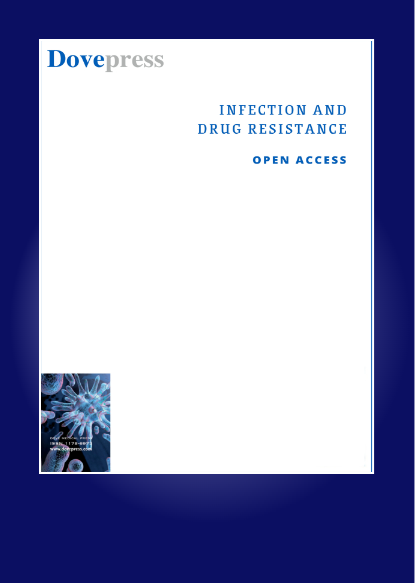预测埃塞俄比亚提格雷的结核病发病率及其趋势:现实-反事实建模方法
IF 2.9
3区 医学
Q2 INFECTIOUS DISEASES
引用次数: 0
摘要
背景:埃塞俄比亚提格雷地区从 2020 年到 2022 年一直受到内战的影响,受损的卫生系统正面临着结核病发病率上升的问题。我们的研究采用数学模型来预测战争期间和冲突后埃塞俄比亚北部提格雷地区的结核病发病率及其趋势:我们利用 SEIRD 模型预测了最近战争背景下提格雷地区 2020 年至 2025 年的结核病发病率,并将其与没有战争时的反事实趋势进行了比较。反事实趋势是利用自回归综合移动平均(ARIMA)模型对静态时间序列数据进行预测的。我们对 ARIMA 模型进行了滚动原点交叉验证,并对 SEIRD 模型进行了敏感性分析。初始结核病数据和模型参数分别来自卫生计量与评价研究所和文献:2000 年至 2017 年间,提格雷的结核病发病率以每年 3.0% 的速度下降。战争爆发前不久,该地区的结核病发病率为每 10 万人 178 例。在没有战争的反事实情况下,预计 2022 年的发病率将降至 144.3 人,2025 年降至 126.3 人。然而,由于战争和围困,SEIRD 预测的结核病发病率在 2022 年将增至 965.5(95% CI:958.5-972.7),2025 年增至 372.4(95% CI:367.7-376.6)。2022 年,每 10 万人中有 800 多例肺结核病人是由战争造成的。战后,预计到 2023 年,发病率将下降 30%:结论:提格雷战争扭转了结核病发病率持续二十年下降的趋势,使结核病发病率比未发生战争时增加了五倍。需要采取紧急干预措施,支持结核病的预防、检测和治疗,尤其是在重点人群和弱势群体中。本文章由计算机程序翻译,如有差异,请以英文原文为准。
Predicting Tuberculosis Incidence and Its Trend in Tigray, Ethiopia: A Reality-Counterfactual Modeling Approach
Background: The Tigray region of Ethiopia, which has been affected by civil war from 2020 to 2022, is facing an increase in tuberculosis in the damaged health system. Our study employed mathematical modeling to predict the incidence of tuberculosis and its trends during the war and in the post-conflict setting of Tigray, Northern Ethiopia.
Methods: We predicted the incidence of tuberculosis from 2020 to 2025 in Tigray using the SEIRD model in the context of the recent war and compared it with its counterfactual trend in the absence of war. The counterfactual trend was forecasted using an autoregressive integrated moving average (ARIMA) model for stationary time-series data. We performed rolling origin cross-validation for ARIMA and sensitivity analysis for the SEIRD model. The initial tuberculosis data and model parameters were obtained from the Institute for Health Metrics and Evaluation and the literature, respectively.
Results: Between 2000 and 2017, the incidence of tuberculosis in Tigray decreased at an annual rate of 3.0%. Shortly before the war, the incidence of tuberculosis in the region was 178 per 100,000 people. In a counterfactual scenario where there was no war, the incidence was projected to decrease to 144.3 in 2022 and 126.3 in 2025. However, owing to the war and siege, the SEIRD-projected incidence of tuberculosis would have increased to 965.5 (95% CI: 958.5– 972.7) in 2022 and 372.4 (95% CI: 367.7– 376.6) in 2025. Over 800 cases of tuberculosis per 100,000 people were attributed to the war in 2022. In the postwar period, the incidence is projected to decrease by 30% by 2023.
Conclusion: The Tigray War reversed a two-decade decline in tuberculosis cases, causing a five-fold increase compared to the no-war scenario. Urgent interventions are needed to support tuberculosis prevention, testing, and treatment, particularly in key and vulnerable populations.
Methods: We predicted the incidence of tuberculosis from 2020 to 2025 in Tigray using the SEIRD model in the context of the recent war and compared it with its counterfactual trend in the absence of war. The counterfactual trend was forecasted using an autoregressive integrated moving average (ARIMA) model for stationary time-series data. We performed rolling origin cross-validation for ARIMA and sensitivity analysis for the SEIRD model. The initial tuberculosis data and model parameters were obtained from the Institute for Health Metrics and Evaluation and the literature, respectively.
Results: Between 2000 and 2017, the incidence of tuberculosis in Tigray decreased at an annual rate of 3.0%. Shortly before the war, the incidence of tuberculosis in the region was 178 per 100,000 people. In a counterfactual scenario where there was no war, the incidence was projected to decrease to 144.3 in 2022 and 126.3 in 2025. However, owing to the war and siege, the SEIRD-projected incidence of tuberculosis would have increased to 965.5 (95% CI: 958.5– 972.7) in 2022 and 372.4 (95% CI: 367.7– 376.6) in 2025. Over 800 cases of tuberculosis per 100,000 people were attributed to the war in 2022. In the postwar period, the incidence is projected to decrease by 30% by 2023.
Conclusion: The Tigray War reversed a two-decade decline in tuberculosis cases, causing a five-fold increase compared to the no-war scenario. Urgent interventions are needed to support tuberculosis prevention, testing, and treatment, particularly in key and vulnerable populations.
求助全文
通过发布文献求助,成功后即可免费获取论文全文。
去求助
来源期刊

Infection and Drug Resistance
Medicine-Pharmacology (medical)
CiteScore
5.60
自引率
7.70%
发文量
826
审稿时长
16 weeks
期刊介绍:
About Journal
Editors
Peer Reviewers
Articles
Article Publishing Charges
Aims and Scope
Call For Papers
ISSN: 1178-6973
Editor-in-Chief: Professor Suresh Antony
An international, peer-reviewed, open access journal that focuses on the optimal treatment of infection (bacterial, fungal and viral) and the development and institution of preventative strategies to minimize the development and spread of resistance.
 求助内容:
求助内容: 应助结果提醒方式:
应助结果提醒方式:


